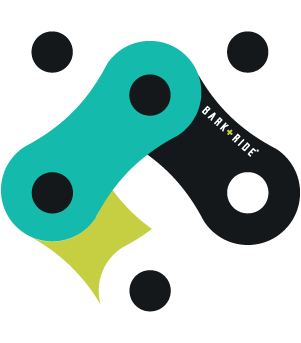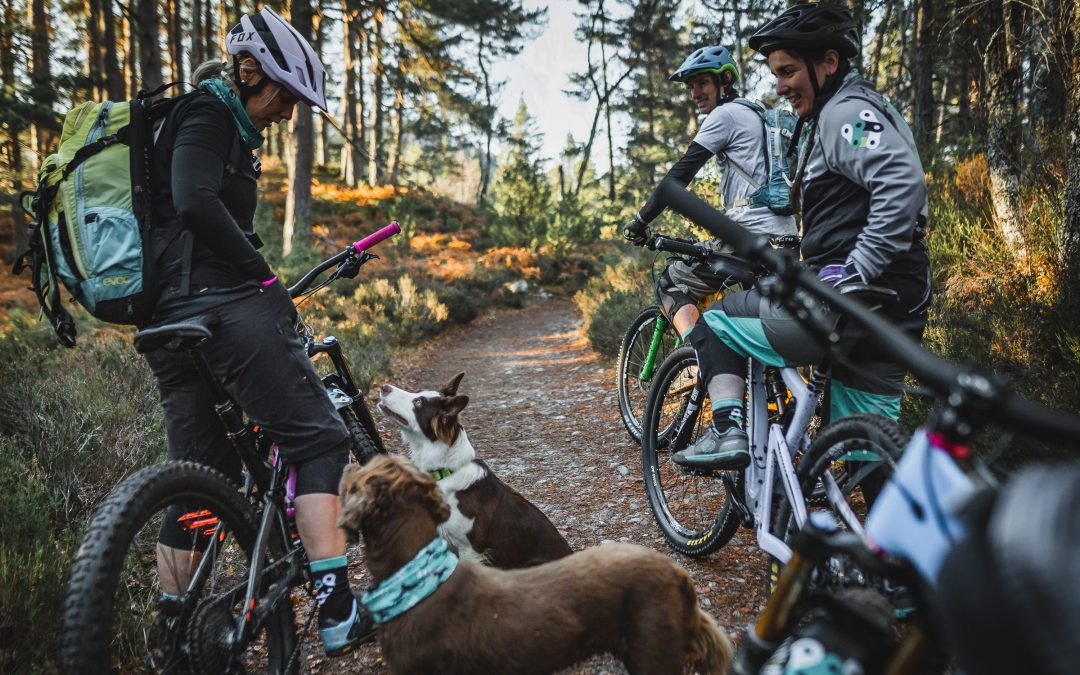Trail dogs. Love them or hate them it seems. Some people are indifferent, some think they are a fashion statement. Whatever your feelings, they are here to stay. But what’s the score with training? We had a chat to Karen from Bark and Ride Sports about the company, trail dogs and her thoughts on how the experience could be better for everyone.
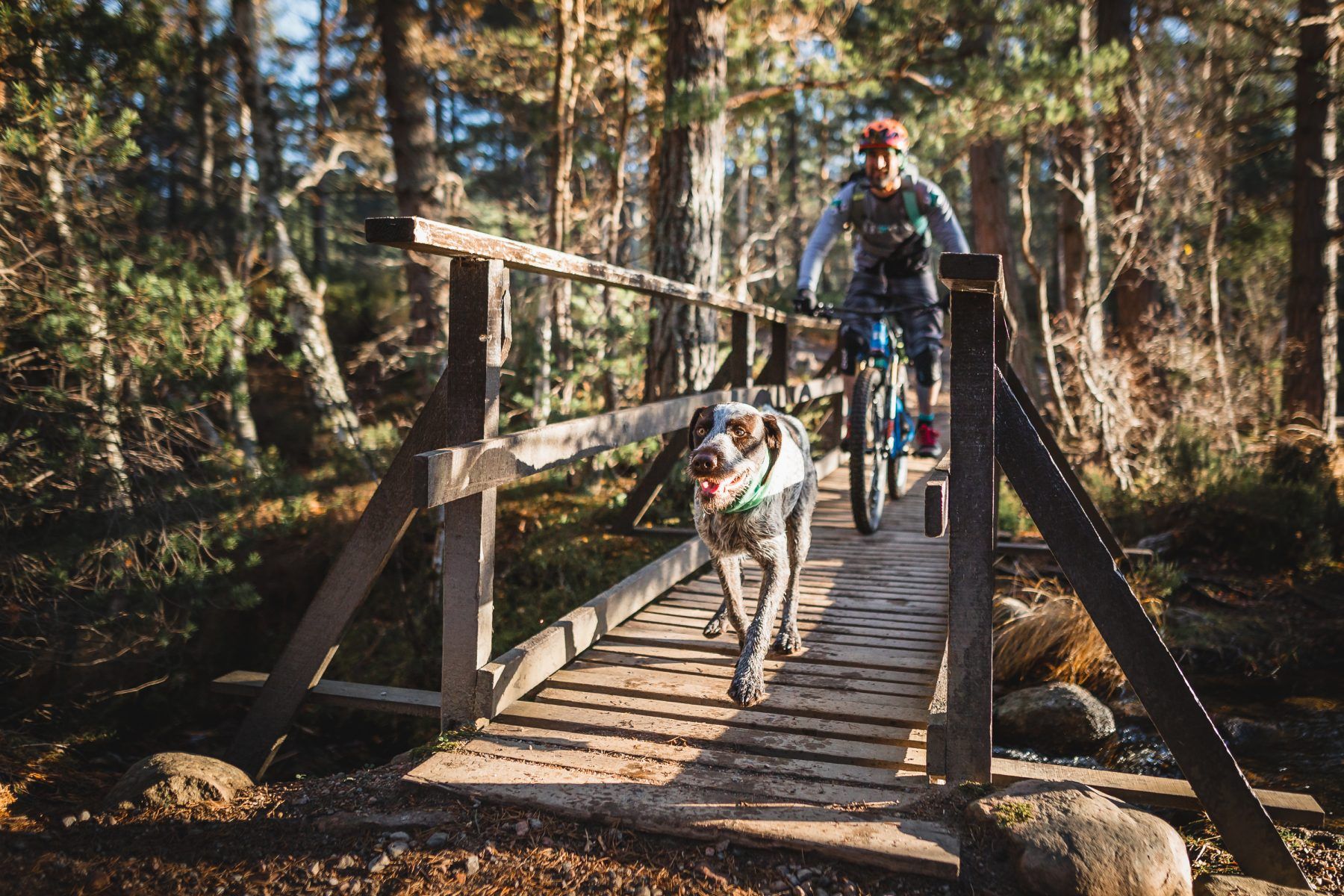
Tell us about Bark and Ride and how it all got started?
I’m Kaz, the founder of Bark + Ride, we’re a Scottish, outdoor lifestyle brand for trail dogs and mountain bikers! We’re based in Scotland’s outdoor capital, Aviemore. There we design quality gear, built specifically to take you further into the rugged landscapes we adventure in. Whether that’s a day at a trail centre or a multi-day adventure in the mountains, we design collars, leads and harnesses. We also have a range of other essential kit for trail dogs and their riders. We identified that there was a real need for quality gear with safety in mind, specifically with trail dogs. Currently, there isn’t another brand on the market providing products for mountain bikers who want to experience that awesome feeling of riding with their dog.
If someone is thinking about training their dog up to ride with them, do you have a few tips to get started?
Get those basics in puppy/dog training dialled! Good eye contact. Good heelwork and awesome recall with a van load of treats/tug toys/tennis balls. This will generally set most dogs up to be a good trail dog, but some take a lot more work. Start with basic puppy training first. If you’ve got a youngster, focus training so they are thinking about you. The rest can come at around 9+ months. The last thing you want is a super obedient dog who is scared of the sound of your brakes or the buzz of your freehub. Introduce them to the sight and sound of your bike super slowly. Start in the garden and walk around with it. Later, head into the house, sit on it and encourage them over, just very gently building it up.
Discourage any over-exuberant behaviour such as wheel biting or barking by changing the game! Position them to be where you want them to be whilst riding by changing direction, stopping or introducing an exciting toy to grab their attention away from the bike and into the position you want. Ideally, you want your dog to run by your side at a heel, but some dogs do want to be out ahead which is breed dependent. Consistency in training is key but most importantly have fun with it!
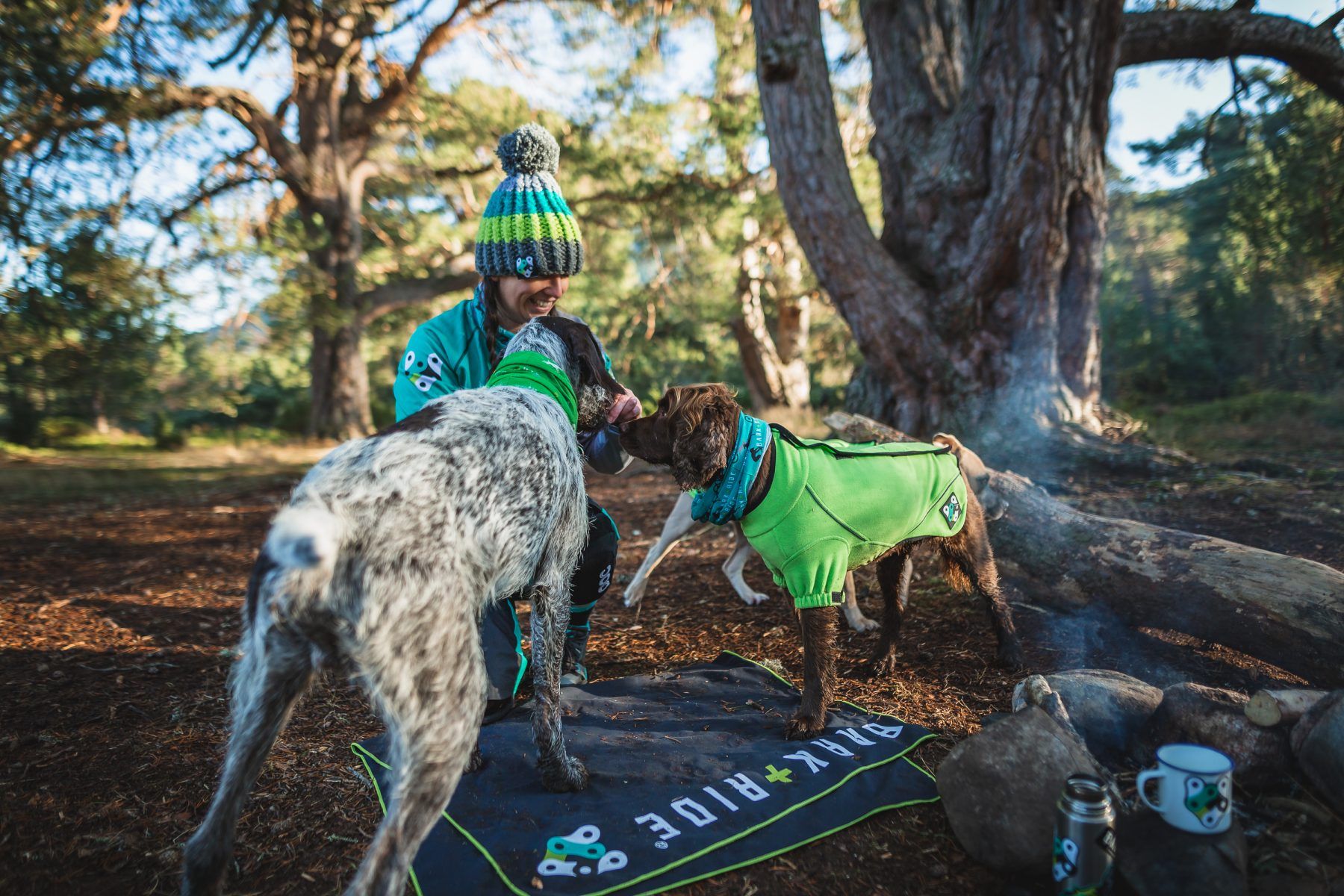
What would you say is the biggest mistake people make when it comes to riding with dogs?
Hmm, we see it all too often. Unfortunately, I’d say that misjudging your dog’s capabilities from a young age has to be the biggest mistake we see. Some folk who are new to riding with their dog presume that since their dog is full of beans every day ready for walkies, and they can run endlessly around the woods that they can go straight from zero training to full-blown trail dog in a day.
They’d be right in thinking they had achieved that by that look on their dog’s face as it pants away smiling before flopping on the floor at home, a contented dog at last! But the real mistake is the distance and inexperience in the unknown. Dogs who aren’t used to running at a set pace or distance can get injured really quickly. Especially if they are not particularly active dogs to begin with.
It’s really important to evaluate your dog’s current exercise levels and build up in increments of distance. Then work on training commands to ensure they aren’t suffering in silence with joint or back pain. The other mistake I see a lot on social media, unfortunately, is that people take their new puppies out far too young. Not only are the pups completely inexperienced, they haven’t fully developed. That means their bones are still forming and growing.
If you over-exercise a pup, it’s a sure-fire way to shorten the lifespan of your dog by giving them early onset arthritis. This leads to a hefty vets bill every month for steroid injections and painkillers. It’s so sad to see and can happen to the completely innocent, but it’s just not worth the risk. Patience is key; enjoy that time with them as pups as they learn their own world. Focus on puppy training at home and on local walks which gives them great physical and mental growth and stimulation.
If you could give one piece of advice what would it be?
Be patient. Every dog is totally different. Just because your pal Alex’s spaniel can run to his back wheel from the get-go, doesn’t mean that your dog will do the same. Each dog is bred for a different reason. Some are natural-born hunters and have incredible speed, stamina and prey drives such as Weimaraners, Vizslas and Pointers. Others are meant for herding sheep or retrieving which can bring with it a whole other world of interesting habits if not managed properly.
Do your research and take your time training. Do it each and every day, little and often. Consistency is key. I still train Harris every single time we are out because he is a “Velociraptopointer” aka a German Wirehaired Pointer. He won’t be beaten on the trails no matter how fast you or anyone else thinks they can go. He also has a prey drive that if not managed correctly could become dangerous.
Accept that as your dog gets older, you’ll have to slow it down and finally accept the day when retirement comes, as heartbreaking as it is.
That wasn’t really one piece of advice was it? Ha!
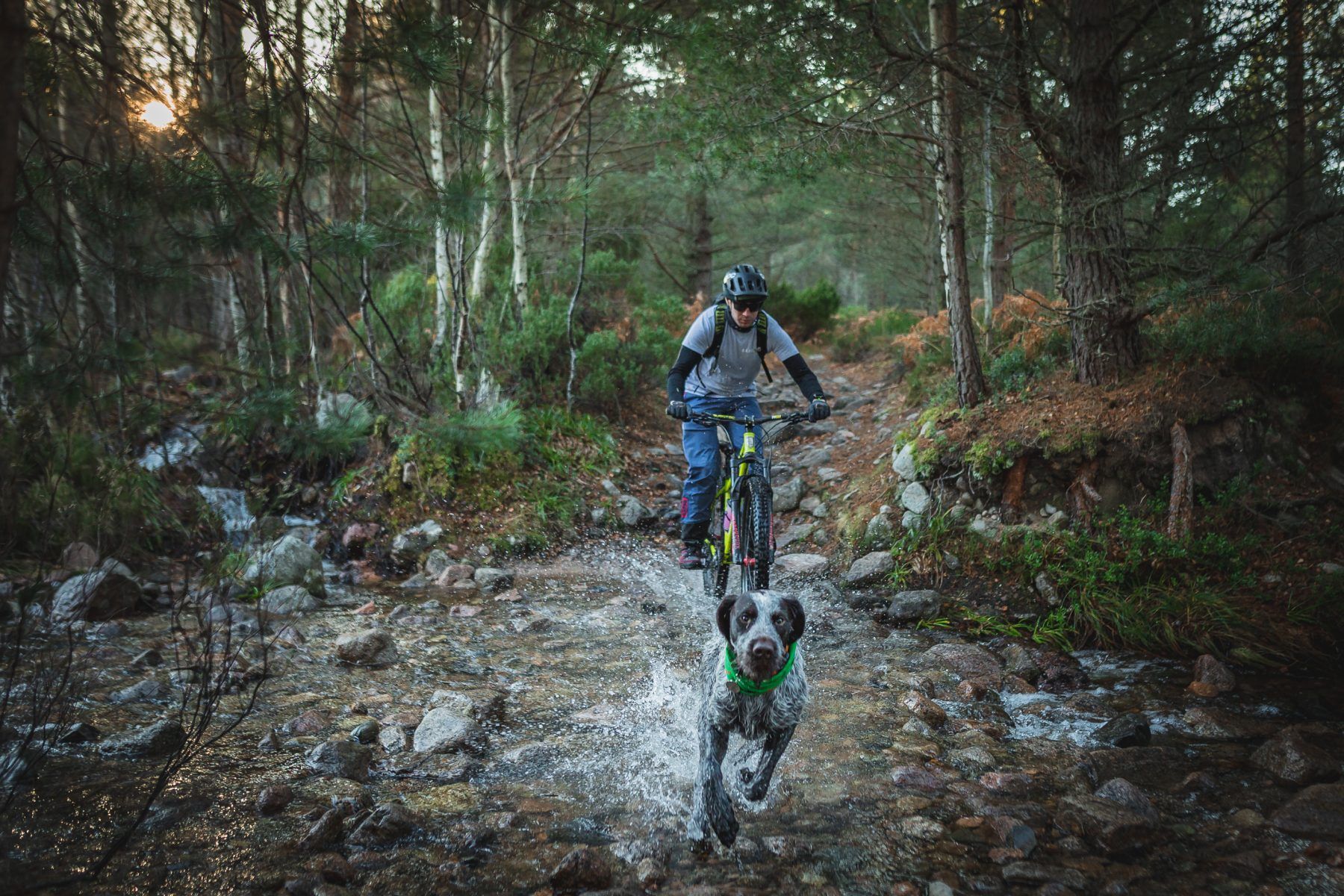
Some people consider riding with a dog to be cruel, how can people mitigate the risks and what can they do to make sure their dog is happy and healthy?
Once you’ve taken the time and dedication to slowly but surely turn your pupster into a fully grown trail hound it’s good to look at some telltale signs as to whether you, your pals, and most importantly your dog is having a good time. If your dog is stressing you out whilst riding with others (and yup I’ve been there a lot with Harris) you know it’s time to be honest with yourself and say, ok, not today, and accept that you might need to go back a stage with training. Identifying that is essential for everyone’s enjoyment. People and dogs know stress when they see or hear it. It’s always important to give your dog a good check over pre and post-ride for any burrs, cuts, grazes, limps or ouchies along the way. Also, make sure to plan your ride time and prepare your kit for an emergency situation.
Not everyone loves the thought of having a dog run about their local trail, but as long as you are in control of him/her you are in control of the outcome for everyone’s benefit. If someone is not happy, reassurance is always good and picking your position within a group ride can make or break the fun of a descent for a group.
We know not everyone likes ‘trail dogs’, or even riding with them (we understand there are many reasons for this) but what would you ask them to consider that might benefit them if they spot a dog whilst riding or a friend brings one on the ride?
Riding with a dog gave me great amounts of confidence to stop thinking negatively about my level of fitness in comparison to others. The mental and physical benefits are amazing. Our customers and friends all have amazing shared adventures together. We all enjoy the challenge of training a trail dog and seeing it all come to fruition when they’re running by our side, making eye contact and chasing us down a trail. Biking with dogs has created a great community. We often hear of the huge mental health benefits of biking with dogs. If it’s something you are considering, we encourage going out in a group with someone who takes their dog with them and seeing how much fun it can be!
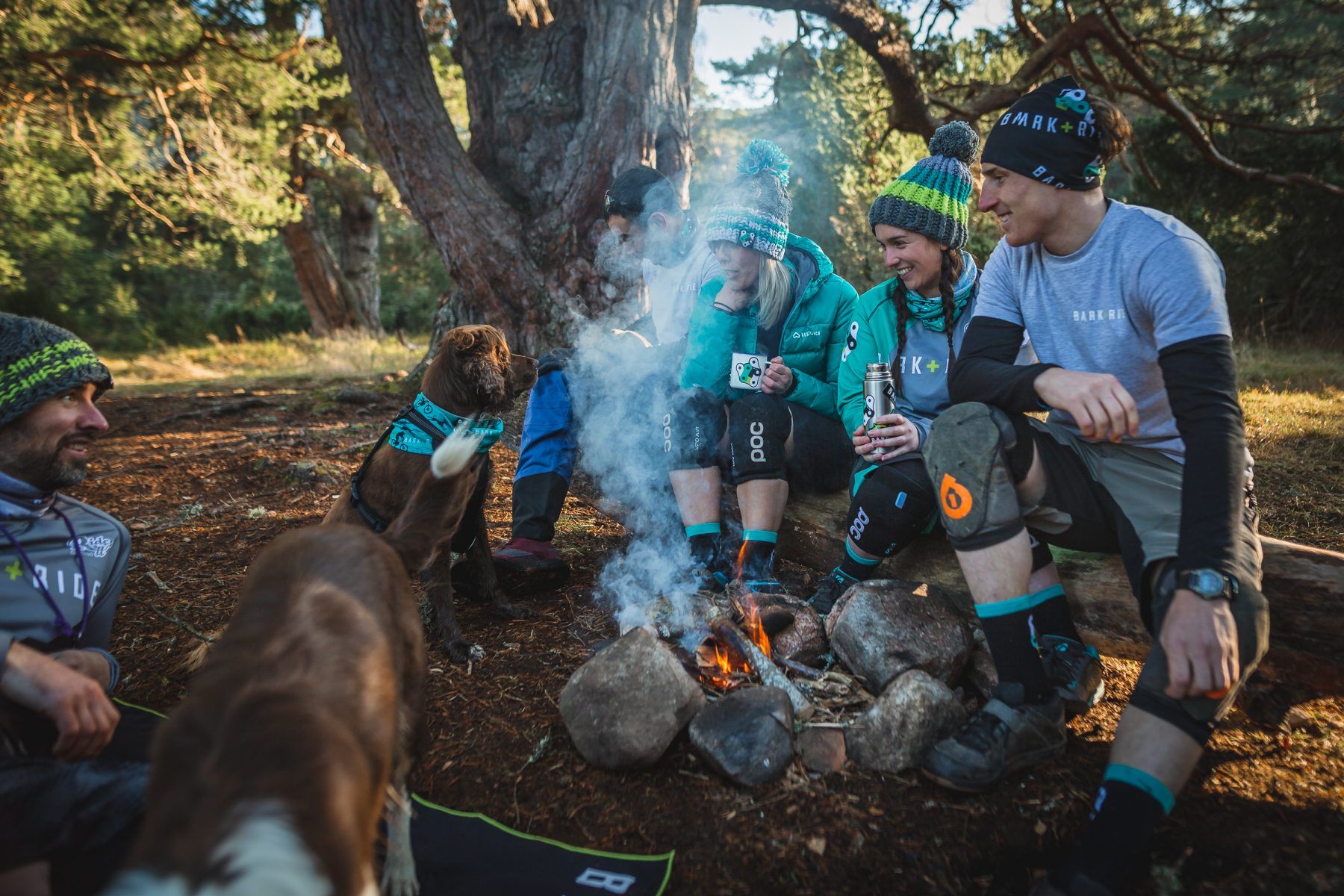
And of course, in response to that, what would you say to owners about training and making sure they are being mindful of other trail users?
Maybe you and your pooch are having an off day and his or her ears are sewn shut. Know when to call it a day. If someone else in your group isn’t happy or nervous riding with dogs, you can let them go first. If you have a leading dog, you go first and ask for some space around you. The person might not be happy, so at least you know for next time and can choose to ride without the dog on those days.
You’re responsible for the actions of your dog no matter what. It’s always better to be the bigger person and just say sorry if they do get in the way. You can’t expect to have a perfect dog all the time. Sometimes it’s a challenge, but 99.9% of the time you’re having an awesome time railing berms with your best floofy friend!
Do you think ‘trail dogs’ sometimes get a bit of a bad reputation? (If so, what can dog owners consider/do to help improve this?)
There will always be folk who don’t like trail dogs. Just like folk who don’t like roadies (ha). As long as we are all in control as much as we can be when sharing the trail, and do all we can to have a well-trained pup and take responsibility, I think there shouldn’t be a problem. It’s good for non-trail dog riders to be aware of the possible outcomes when riding with someone’s dog too and being aware of their environment is key.
I guess that’s all part of being an awesome biker and accepting different people’s speeds, abilities, age, or ride style when sharing the trails! The most important part is we’re all just having a bloody good time now that we can! Hopefully throughout lockdown people were able to put some time into training their pup and are now reaping the benefits!
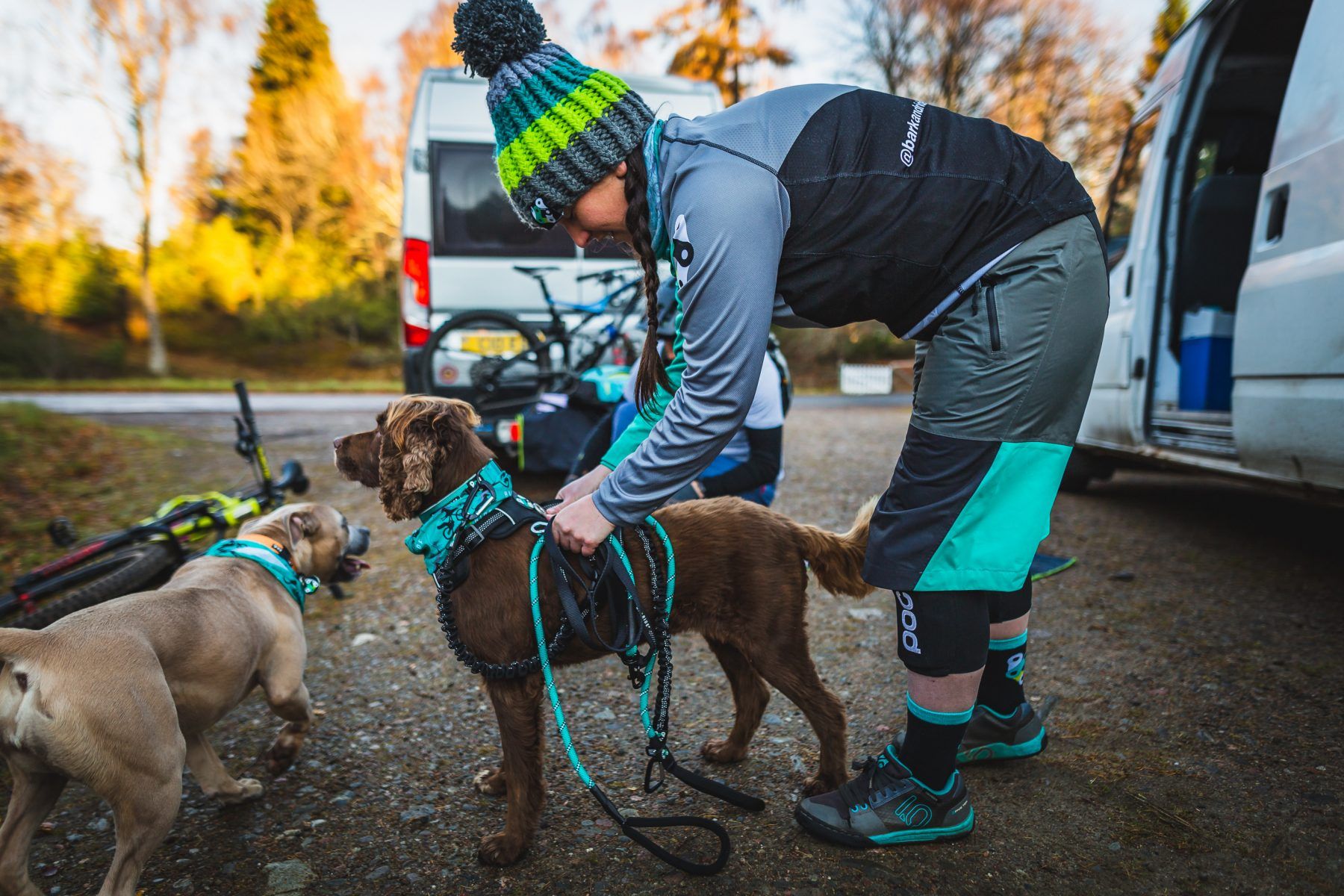
Have a trail dog? Check out their kit as well as more advice on the Bark and Ride website.
Related Stories:
Podcast: Trail Dogs, Tube Tech and Fire on t’Moors
Video: A Dog’s Tale by Shimano
We Interview 13 Of The Most Outgoing Dogs At The Pivot TwentyFour12
